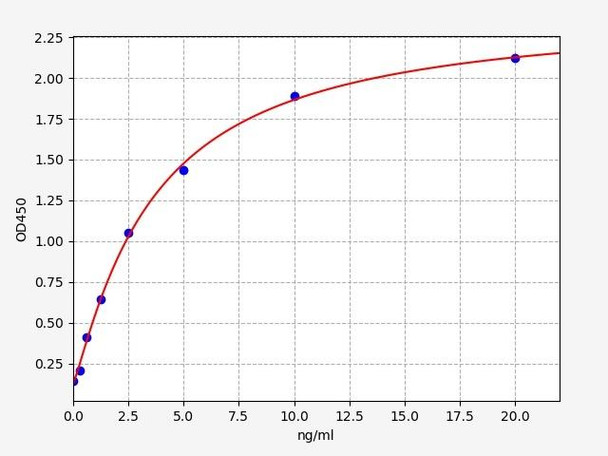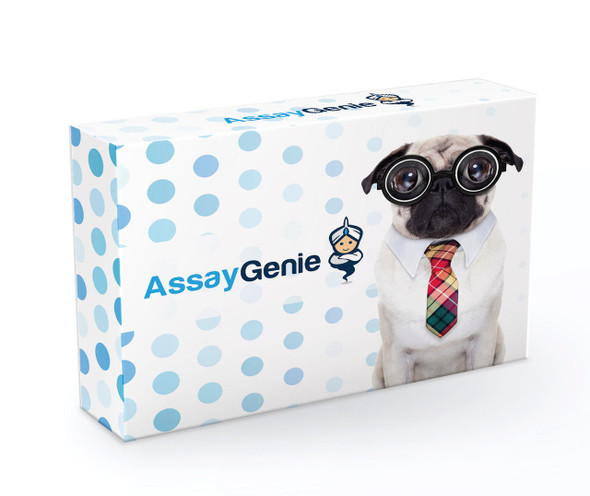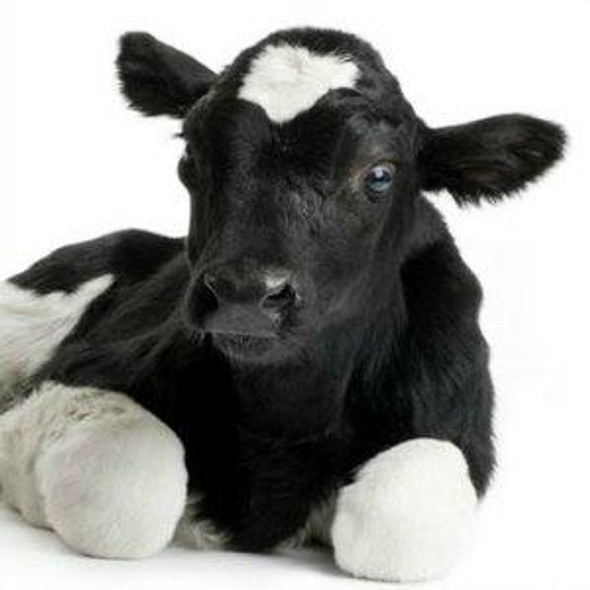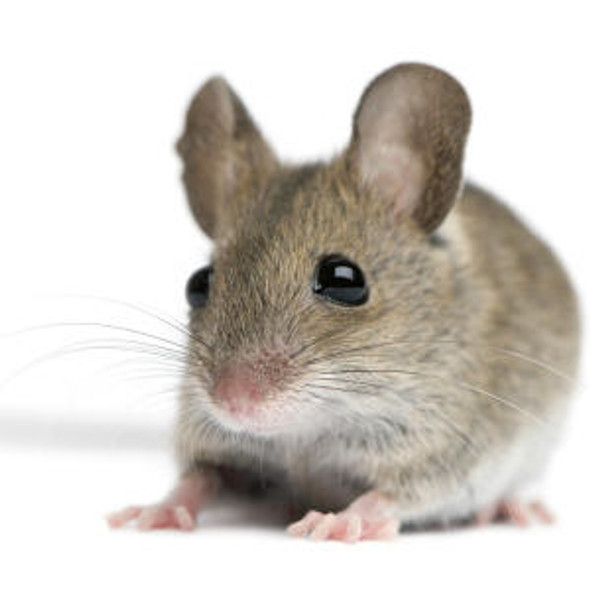Rat Immunology ELISA Kits 1
Rat CD44 ELISA Kit
- SKU:
- RTFI00224
- Product Type:
- ELISA Kit
- Size:
- 96 Assays
- Uniprot:
- P26051
- Sensitivity:
- 0.188ng/ml
- Range:
- 0.313-20ng/ml
- ELISA Type:
- Sandwich
- Synonyms:
- Cd44, ECMR-III, HCAM, HCELL, LHR, MDU2, MDU3, MIC4, MUTCH-I, Pgp1, CD44R, CDw44, CSPG8, Epican, HUTCH-I, Hyaluronate receptor, IN, LHR, MC56, PGP-1, PGP-I, Phagocytic glycoprotein 1, Phagocytic glycoprotein I, IN
- Reactivity:
- Rat
- Research Area:
- Cell Biology
Description
| Product Name: | Rat Cd44 (CD44 antigen) ELISA Kit |
| Product Code: | RTFI00224 |
| Size: | 96 Assays |
| Target: | Rat Cd44 |
| Alias: | Cd44, ECMR-III, HCAM, HCELL, LHR, MDU2, MDU3, MIC4, MUTCH-I, Pgp1, CD44R, CDw44, CSPG8, Epican, HUTCH-I, Hyaluronate receptor, IN, LHR, MC56, PGP-1, PGP-I, Phagocytic glycoprotein 1, Phagocytic glycoprotein I, IN |
| Reactivity: | Rat |
| Detection Method: | Sandwich ELISA, Double Antibody |
| Sensitivity: | 0.188ng/ml |
| Range: | 0.313-20ng/ml |
| Storage: | 4°C for 6 months |
| Note: | For Research Use Only |
| Recovery: | Matrices listed below were spiked with certain level of Rat Cd44 and the recovery rates were calculated by comparing the measured value to the expected amount of Rat Cd44 in samples. | ||||||||||||||||
| |||||||||||||||||
| Linearity: | The linearity of the kit was assayed by testing samples spiked with appropriate concentration of Rat Cd44 and their serial dilutions. The results were demonstrated by the percentage of calculated concentration to the expected. | ||||||||||||||||
| |||||||||||||||||
| Intra-Assay: | CV <8% | ||||||||||||||||
| Inter-Assay: | CV <10% |
| Uniprot: | P26051 |
| UniProt Protein Function: | CD44: Receptor for hyaluronic acid (HA). Mediates cell-cell and cell-matrix interactions through its affinity for HA, and possibly also through its affinity for other ligands such as osteopontin, collagens, and matrix metalloproteinases (MMPs). Adhesion with HA plays an important role in cell migration, tumor growth and progression. Also involved in lymphocyte activation, recirculation and homing, and in hematopoiesis. Altered expression or dysfunction causes numerous pathogenic phenotypes. Great protein heterogeneity due to numerous alternative splicing and post-translational modification events. Interacts with PKN2. Interacts with HA, as well as other glycosaminoglycans, collagen, laminin, and fibronectin via its N-terminal segment. Interacts with ANK, the ERM proteins (VIL2, RDX and MSN), and NF2 via its C-terminal segment. Isoform 10 (epithelial isoform) is expressed by cells of epithelium and highly expressed by carcinomas. Expression is repressed in neuroblastoma cells. 19 isoforms of the human protein are produced by alternative splicing. |
| UniProt Protein Details: | Protein type:Receptor, misc.; Cell adhesion; Membrane protein, integral; Motility/polarity/chemotaxis Cellular Component: Golgi apparatus; protein complex; focal adhesion; cell surface; basolateral plasma membrane; apical plasma membrane; cytoplasm; plasma membrane; integral to membrane; nucleus; external side of plasma membrane Molecular Function:hematopoietin/interferon-class (D200-domain) cytokine receptor activity; protein binding; transmembrane receptor activity; cytokine binding; hyaluronic acid binding; phosphoprotein binding; protein kinase binding; epidermal growth factor receptor binding; hyalurononglucosaminidase activity Biological Process: cell migration; positive regulation of heterotypic cell-cell adhesion; Wnt receptor signaling pathway; positive regulation of neutrophil apoptosis; negative regulation of caspase activity; response to organic cyclic substance; positive regulation of peptidyl-serine phosphorylation; blood vessel maturation; response to vitamin A; hyaluronan catabolic process; negative regulation of DNA damage response, signal transduction by p53 class mediator; positive regulation of peptidyl-tyrosine phosphorylation; negative regulation of mature B cell apoptosis; ureteric bud branching; cartilage development; regulation of cell growth; inflammatory response; cell adhesion; healing during inflammatory response; neurite development; negative regulation of apoptosis |
| NCBI Summary: | adhesion molecule involved in migration, cell fusion and resportion in osteoclasts that also plays a role in cellular metastasis [RGD] |
| UniProt Code: | P26051 |
| NCBI GenInfo Identifier: | 19923703 |
| NCBI Gene ID: | 25406 |
| NCBI Accession: | NP_037056.2 |
| UniProt Related Accession: | O08779,O35249,O70509,P26051,Q9EP99,Q9ERN2,Q9ERN3 |
| Molecular Weight: | |
| NCBI Full Name: | CD44 antigen |
| NCBI Synonym Full Names: | Cd44 molecule |
| NCBI Official Symbol: | Cd44 |
| NCBI Official Synonym Symbols: | CD44A; METAA; RHAMM; MGC124941 |
| NCBI Protein Information: | CD44 antigen; PGP-1; PGP-I; HUTCH-I; ECMR-III; hermes antigen; hyaluronate receptor; phagocytic glycoprotein 1; phagocytic glycoprotein I; extracellular matrix receptor III; GP90 lymphocyte homing/adhesion receptor; Cell surface glycoprotein CD44 (hyaluronate binding protein) |
| UniProt Protein Name: | CD44 protein |
| Protein Family: | CD44 antigen |
| UniProt Gene Name: | Cd44 |
| UniProt Entry Name: | O08779_RAT |
| Step | Procedure |
| 1. | Set standard, test sample and control (zero) wells on the pre-coated plate respectively, and then, record their positions. It is recommended to measure each standard and sample in duplicate. Wash plate 2 times before adding standard, sample and control (zero) wells! |
| 2. | Aliquot 0.1ml standard solutions into the standard wells. |
| 3. | Add 0.1 ml of Sample / Standard dilution buffer into the control (zero) well. |
| 4. | Add 0.1 ml of properly diluted sample ( Human serum, plasma, tissue homogenates and other biological fluids.) into test sample wells. |
| 5. | Seal the plate with a cover and incubate at 37°C for 90 min. |
| 6. | Remove the cover and discard the plate content, clap the plate on the absorbent filter papers or other absorbent material. Do NOT let the wells completely dry at any time. Wash plate X2. |
| 7. | Add 0.1 ml of Biotin- detection antibody working solution into the above wells (standard, test sample & zero wells). Add the solution at the bottom of each well without touching the side wall. |
| 8. | Seal the plate with a cover and incubate at 37°C for 60 min. |
| 9. | Remove the cover, and wash plate 3 times with Wash buffer. Let wash buffer rest in wells for 1 min between each wash. |
| 10. | Add 0.1 ml of SABC working solution into each well, cover the plate and incubate at 37°C for 30 min. |
| 11. | Remove the cover and wash plate 5 times with Wash buffer, and each time let the wash buffer stay in the wells for 1-2 min. |
| 12. | Add 90 µL of TMB substrate into each well, cover the plate and incubate at 37°C in dark within 10-20 min. (Note: This incubation time is for reference use only, the optimal time should be determined by end user.) And the shades of blue can be seen in the first 3-4 wells (with most concentrated standard solutions), the other wells show no obvious color. |
| 13. | Add 50 µL of Stop solution into each well and mix thoroughly. The color changes into yellow immediately. |
| 14. | Read the O.D. absorbance at 450 nm in a microplate reader immediately after adding the stop solution. |
When carrying out an ELISA assay it is important to prepare your samples in order to achieve the best possible results. Below we have a list of procedures for the preparation of samples for different sample types.
| Sample Type | Protocol |
| Serum: | If using serum separator tubes, allow samples to clot for 30 minutes at room temperature. Centrifuge for 10 minutes at 1,000x g. Collect the serum fraction and assay promptly or aliquot and store the samples at -80°C. Avoid multiple freeze-thaw cycles. If serum separator tubes are not being used, allow samples to clotovernight at 2-8°C. Centrifuge for 10 minutes at 1,000x g. Removeserum and assay promptly or aliquot and store the samples at-80°C. Avoid multiple freeze-thaw cycles. |
| Plasma: | Collect plasma using EDTA or heparin as an anti-coagulant. Centrifuge samples at 4°C for 15 mins at 1000 × g within 30 mins of collection. Collect the plasma fraction and assay promptly or aliquot and store the samples at -80°C. Avoid multiple freeze-thaw cycles.Note: Over haemolysed samples are not suitable for use with this kit. |
| Urine & Cerebrospinal Fluid: | Collect the urine (mid-stream) in a sterile container, centrifuge for 20 mins at 2000-3000 rpm. Remove supernatant and assay immediately. If any precipitation is detected, repeat the centrifugation step. A similar protocol can be used for cerebrospinal fluid. |
| Cell Culture Supernatant: | Collect the cell culture media by pipette, followed by centrifugation at 4°C for 20 mins at 1500 rpm. Collect the clear supernatant and assay immediately. |
| Cell Lysates: | Solubilize cells in lysis buffer and allow to sit on ice for 30 minutes. Centrifuge tubes at 14,000 x g for 5 minutes to remove insoluble material. Aliquot the supernatant into a new tube and discard the remaining whole cell extract. Quantify total protein concentration using a total protein assay. Assay immediately or aliquot and store at ≤ -20°C. |
| Tissue Homogenates: | The preparation of tissue homogenates will vary depending upon tissue type. Rinse tissue with 1X PBS to remove excess blood & homogenizein 20ml of 1X PBS (including protease inhibitors) and store overnight at ≤ -20°C. Two freeze-thaw cycles are required to break the cell membranes. To further disrupt the cell membranes you can sonicate the samples. Centrifuge homogenates for 5 mins at 5000xg. Remove the supernatant and assay immediately or aliquot and store at -20°C or-80°C. |
| Tissue Lysates: | Rinse tissue with PBS, cut into 1-2 mm pieces, and homogenize with a tissue homogenizer in PBS. Add an equal volume of RIPA buffer containing protease inhibitors and lyse tissues at room temperature for 30 minutes with gentle agitation. Centrifuge to remove debris. Quantify total protein concentration using a total protein assay. Assay immediately or aliquot and store at ≤ -20 °C. |
| Breast Milk: | Collect milk samples and centrifuge at 10,000 x g for 60 min at 4°C. Aliquot the supernatant and assay. For long term use, store samples at -80°C. Minimize freeze/thaw cycles. |






